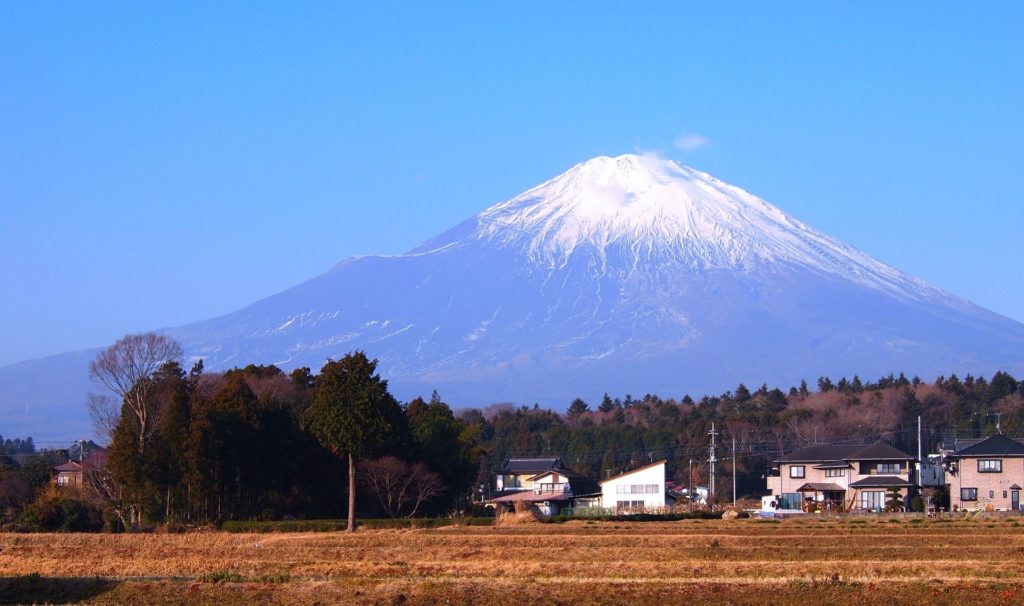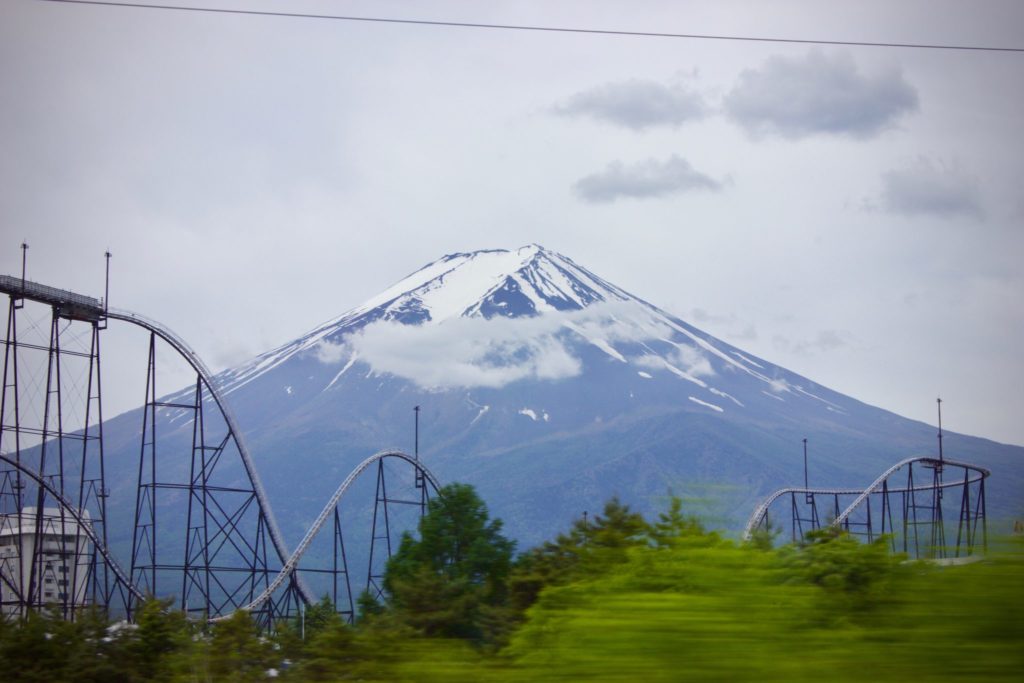Standing at 3,776 metres, Mount Fuji is the tallest mountain in Japan. Located on the border of Yamanashi Prefecture and Shizuoka Prefecture, it is a popular photography subject because of its snow-capped, almost-perfect volcano shape. On clear days, it can be seen even from as far as Tokyo and Yokohama, and in the summer, it is open to all hikers, both locals and foreigners, who are looking for some fun and exciting outdoor nature adventure.

How To Get There
There are a variety of transportation options available to reach Mount Fuji, whether you are coming from Tokyo or around the Shizuoka area.
From Shinjuku Station in Tokyo, there are buses that can take you to the Fuji Subaru 5th station from as early as 6:45 am up until 7:25 pm. The one-way trip takes about two hours and thirty-five minutes.
If you are coming from Kawaguchiko or Fujisan Station, there are buses that leave every 30 to 60 minutes, and get to the Fuji Subaru 5th station in an hour.
To access Gotemba 5th Station, there are buses that leave from Gotemba Station and Gotemba Premium Outlets, and arrive to the destination in about half an hour.
Fujinomiya 5th station is a two-and-a-half hour bus ride from Shin-Fuji Station or an hour-and-twenty-minute bus ride from Fujinomiya Station.
Top Attractions
Mount Fuji Climb
Climbing season is from July to mid-September. If you plan to climb Mount Fuji on your trip, you can either do it in one day, which is known as a bullet climb, or spend a night in a mountain hut.
Comprised of ten stations, Mount Fuji provides a number of trekking options for adventure seekers, depending on their climbing experience and fitness level.
A lot of people head straight to one of the four 5th stations (Fuji Subaru, Subashiri, Gotemba, and Fujinomiya) via buses and start their ascent there, while there are also that choose to traverse the entire mountain from the 1st station located at the foot of the mountain.
Trails
The total time to climb the mountain up and down varies from eight hours to sixteen hours, depending on which trail you decide to take.
- Yoshida Trail – From Fuji Subaru 5th Station, the ascent takes between five and seven hours, and the descent three to five hours.
- Subashiri Trail – From Subashiri 5th Station, the climb up takes between five and eight hours, and the climb down takes three to five hours.
- Gotemba Trail – From Gotemba Station, it takes seven to ten hours to hike up, and three to six hours to hike down.
- Fujinomiya Trail – From Fujinomiya 5th Station, it takes four to seven hours to ascend and two to four hours to descend.
Make sure to wear the right footwear and clothes to protect you from the rugged terrain, strong winds, low temperatures, and potential rain. Bring enough food and water to last you the entire trek.
Visit the official Mount Fuji Climbing website for more information.
Fuji Five Lakes
The Fuji Five Lake region is made up of Lake Kawaguchiko, Lake Yamanakako, Lake, Motosuko, Lake Shojiko, and Lake Saiko, and is found at Mount Fuji’s northern base. It offers easy access to the various Mount Fuji climbing stations, and provides fantastic views of the mountain. It is home to numerous ryokan, onsen, museums, and areas for camping, fishing, and other outdoor activities.
To access it, take a bus or train to Kawaguchiko Station, and, from there, make use of the retro buses that drop off passengers at various points around the five lakes. You can learn more about the retro buses here. Alternatively, rental cars are another good option for those who prefer to travel at their own pace.
Fuji Q Highland

Home to four roller coasters, including the tallest and fastest in the world today, Fuji Q Highland is an amusement park at the base of Mount Fuji, within the Fuji Five Lakes area. It also has several other attractions, such as anime-themed rides, restaurants, carnival games, souvenir stores, and an ice skating rink. Right outside the park are a hotel, a museum, and a hot spring facility with remarkable views of the snow-capped Mount Fuji.
Tickets, operating hours, access, and other information are found on Fuji Q Highland’s official website.
Fujiten Snow Resort
In winter, you can enjoy some good skiing time with stunning views of Mount Fuji at the Fujiten Snow Resort.
Found along the mountain’s northern base, the ski resort is small but provides a wide range of facilities for all sorts of snow sports for beginners and experts. In addition, it offers family-friendly skiing options, such as a spacious children’s park, where kids can play on a large trampoline, sled, and learn to ski.
Open from early December to early April, the snow resort is accessible via train from Tokyo’s Shinjuku Station to Kawaguchiko Station, and then a 20-minute cab ride. You could also get a rental car to get there. More information is available on Fujiten Snow Resort’s official website.
Snow Town Yeti
Along Mount Fuji’s southern slope lies another small ski resort, known as the Snow Town Yeti. With well-maintained and well-equipped rails, jumps, and runs, it is a great place for beginner snowboarders and skiers. It also has a play area where kids can sled and play with snow.
Open from early October to early April, Snow Town Yeti is the first snow and ski resort to open in the country every year. To get there, take a discount bus that departs from Gotemba Station, Mishimi Station, or Fuji Station. More information is found on Snow Town Yeti’s official website.
Weather
The areas on the base of Mount Fuji enjoy an average temperature of 30 degrees Celsius in the summer months, and below 10 degrees Celsius in the winter. During the climbing season, the temperatures in the 5th stations fall to around 15 degrees Celsius, and drop to below 0 as you get closer to the summit.
